Understanding your HOA’s financial statements can feel like learning a new language. Yet, these documents hold the key to gauging your community’s financial stability, planning for future expenses, and keeping things running smoothly. When you crack the code of these statements, you gain valuable insights into how well your community is managing its money.
Knowing how to read these numbers also empowers everyone involved to make informed decisions. Whether it’s planning for maintenance work, anticipating upcoming projects, or understanding how funds are allocated, these financial documents are essential tools for successful community management. Let’s break down the basics and see what these financial statements can reveal about your HOA.
Key Components of HOA Financial Statements
When you first look at a financial statement, you might wonder where to start. Each component tells a different part of your community’s financial story. Grasping these basics gives you a clearer picture of how funds are flowing and where improvements might be needed.
1. Balance Sheet: This snapshot shows what your community owns and owes at a given time. Assets might include cash and property, while liabilities cover things like loans. A balance sheet helps you see the overall financial standing and is a crucial tool for long-term planning.
2. Income Statement: Think of this as your community’s report card. It details income sources such as fees and assessments and matches them against expenses like maintenance and utilities. A well-managed income statement helps keep the community on track financially.
3. Cash Flow Statement: Knowing where your cash is coming from and going to helps you ensure the community has enough liquidity to meet its obligations. This statement tracks the cash generated and used during a specified period, offering insights into the community’s financial health.
By understanding these components, you’re better prepared to dive into the numbers and uncover their stories. With insights from each section, you can help navigate current financial issues and foresee upcoming ones, ensuring your community remains financially healthy over time.
Common Financial Metrics to Watch
To make the most of your financial statements, it’s helpful to monitor a few key metrics that indicate the financial health of your community. These metrics provide a snapshot of where the association stands and help guide future decisions.
1. Reserve Fund Levels: This metric is perhaps the most critical for future planning. Reserve funds cover major repairs and replacements, like fixing the roof or repaving roads. To make sure your community is prepared for these big expenses, it’s crucial to regularly check if reserve levels are sufficient.
2. Expense Ratios: By comparing expenses to income, you can gauge how well the community manages its finances. High expense ratios might suggest the need to review operational costs or find more cost-effective solutions.
3. Assessment Delinquencies: This metric shows the percentage of homeowners behind on their dues. High delinquency rates can affect cash flow and lead to shortages in covering current expenses. Keeping an eye on this helps address potential issues before they escalate.
How to Read and Analyze Financial Statements
Once you’ve got the hang of the basic components and metrics, it’s time to dig a little deeper. Knowing how to read and analyze these statements can lead to more informed decision-making.
– Identify Trends: Look for patterns over time to see how financial elements are changing. Are reserves growing? Are expenses creeping up each month? Spotting these trends can help anticipate future concerns and plan accordingly.
– Ask Key Questions: When reviewing financial data, consider what impact these numbers might have on the community. Are there areas where spending should be reduced? What projects need immediate funding?
– Understand Financial Notes: These notes explain and provide context for the numbers. They can clarify unusual transactions or adjustments and highlight details vital for accurate interpretation.
Keeping Your Community Financially Healthy
Regular financial reviews and audits are essential practices for a thriving HOA. They ensure transparency and help the board make well-informed decisions. By engaging with financial experts, you can gain further insights into complex areas and navigate any challenges with ease.
Regardless of your level of involvement, keeping a steady eye on these reports fosters a financially secure and sustainable community. It allows you to proactively address issues and maintain a thriving environment for all its members.
To ensure your HOA remains financially stable and your community thrives, consider enhancing your financial management practices. Learn more about expert strategies in financial management for HOA to keep your community secure and well-maintained. Trust AMC to guide you through maintaining comprehensive and accurate financial records, contributing to a sustainable and prosperous neighborhood.




